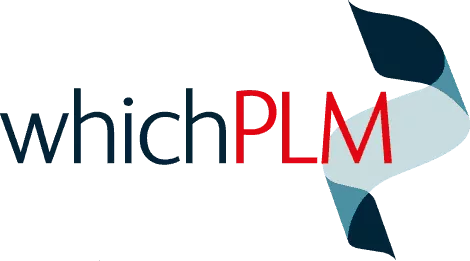For more than a decade, WhichPLM has championed a foundational shift in the fashion industry: moving away from decisions based on instinct or opinion, and towards choices grounded in evidence. At the time, this was a forward-looking argument, anticipating the day when regulatory scrutiny and consumer demand would converge to force greater accountability. That day is now firmly on the horizon.
Since the Ecodesign for Sustainable Products Regulation (ESPR) came into force in 2024, the Digital Product Passport (DPP) has moved from legislative ambition to regulatory reality. While not yet mandatory across every sector, its phased introduction is already underway. Batteries are the first category to fall under these rules by 2026, with textiles, electronics, and furniture expected to follow soon after. By the end of this year, the EU will finalise detailed requirements for each category — marking the point at which the countdown truly begins.
In other words, the clock is ticking. And the reality for fashion brands is stark: the complexity of the value chain, combined with the length of time required for data cleanup and system integration, means that those who wait until the final deadlines are announced will already be too late.
The Cost of Inaction
Standing still is no longer safe. The risks are escalating on three fronts. First, the regulatory burden is real: fines under the EU Green Deal framework can amount to a percentage of global turnover — enough to sting even the most profitable multinational. Second, consumer trust is eroding. Seven in ten consumers say they no longer believe sustainability claims unless they are backed up by verifiable data. Third, inefficiency itself has become a liability. Across many design and sourcing teams, 40 to 50 percent of working hours are lost to chasing down data, reconciling spreadsheets, and correcting errors across the supply chain. Those lost hours don’t just drain morale — they cost millions in delays, missed launches, and shrinking margins.
The workflows that served the industry for the last two decades — static reports, supplier declarations, spreadsheet-led compliance — were never elegant, but they were functional enough. Today, in the face of regulatory complexity and market scepticism, they are simply not fit for purpose.
AI as the Connective Tissue
The fashion value chain is notoriously fragmented. Information lives everywhere — from CAD tools and 3D platforms, to PLM systems, Excel files, WhatsApp chats, Slack threads, and endless email chains. The challenge is not just that this data is scattered; it’s that it is formatted differently, updated at different times, and riddled with inconsistencies.
AI should not be misunderstood as a replacement for these existing systems. It is better understood as connective tissue — a layer that binds them together, weaving interoperability into a network of tools that were never designed to communicate. In doing so, AI preserves existing investments while making them fit for a future of compliance and competitiveness.
Imagine a supply chain agent that works overnight, gathering updates from hundreds of suppliers, validating them automatically, and delivering a clean set of results directly into PLM — without the need for a single email. Or picture a boardroom scenario, where an executive asks: “Which products have certifications expiring this quarter?” and an AI copilot delivers the answer instantly, backed with linked evidence ready for audit. These are not science-fiction visions. They are real applications of AI copilots, agents, and multimodal models already emerging in today’s workflows.

From Declarations to Living Records
Transparency is evolving. It is no longer enough to know where something was made. The coming era of compliance demands a living, machine-readable history of every material, every certification, and every decision made along the journey from design to consumer.
AI enables this evolution. Instead of static declarations, brands can move to continuous assurance. DPP submissions can be generated with linked evidence. Sustainability metrics such as CO₂, water, and energy consumption can be monitored in real time, broken down by supplier or by bill of materials. AI agents can proactively flag risks — certificates approaching expiry, or emissions exceeding benchmarks — before they become compliance failures.
This represents not just a technological shift but a cultural one. Compliance has traditionally been a backward-facing exercise: painful, periodic, and reactive. The future, however, is continuous, embedded, and predictive. It is the only way to satisfy regulators and to rebuild trust with consumers.
The Clock is Ticking
For fashion, the DPP mandate is not yet active — but it is no longer a question of “if.” The legislative roadmap is clear, with sector-specific deadlines already in motion. What is uncertain is not whether DPP will apply, but how quickly each category will be brought into scope. For brands, the only safe assumption is that enforcement is inevitable — and that waiting for final deadlines is a gamble most cannot afford.
The journey to readiness is long. Data cleanup alone requires 12 to 18 months, and AI layering another 6 to 12. For most organisations, that means beginning now if they hope to be compliant in time. If a regulator asked tomorrow, could you prove compliance in real time? Could you demonstrate traceability across every product and every certification? For many, the honest answer today would be no. But those who act now can ensure that by the time the mandates crystallise, they are not just ready, but ahead.
Conclusion: From Optional to Essential
The industry has reached a pivotal moment. Digital lifecycles are no longer a nice-to-have; they are fast becoming mandatory. Transparency is not a marketing slogan but a compliance requirement. Evidence is not an add-on but the foundation of trust.
The journey towards AI-enabled transparency is not without challenges, but it is both achievable and necessary. It begins with recognising that legacy systems are not obsolete, but under-utilised. It continues with the systematic work of data cleanup, system integration, and AI enablement. And it culminates in a value chain that is not only compliant but efficient, resilient, and future-proof.
The brands that start today will be the ones telling the success stories of tomorrow. The ones who wait risk discovering — too late — that compliance is no longer optional, and trust cannot be retrofitted.
Mark Harrop




